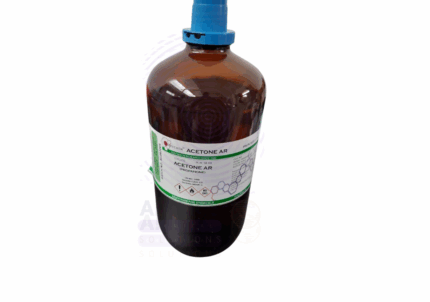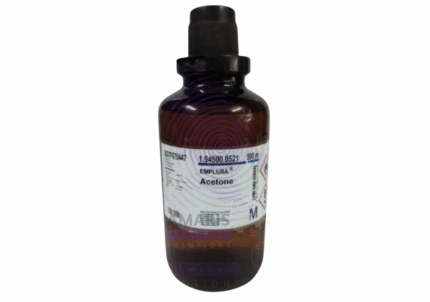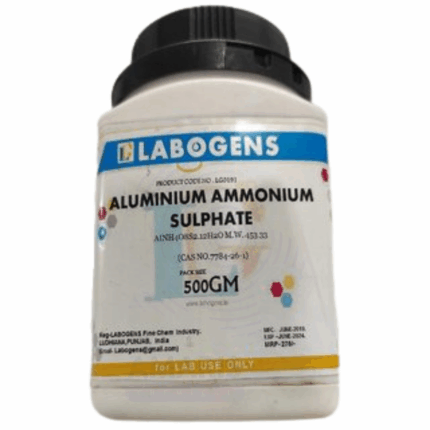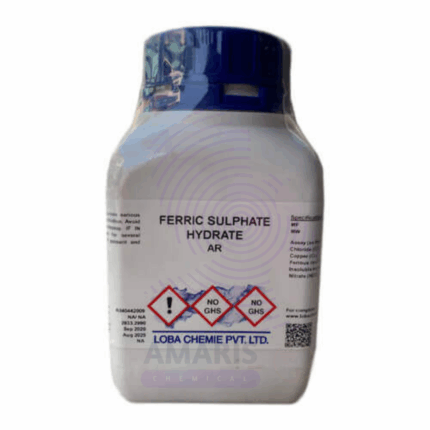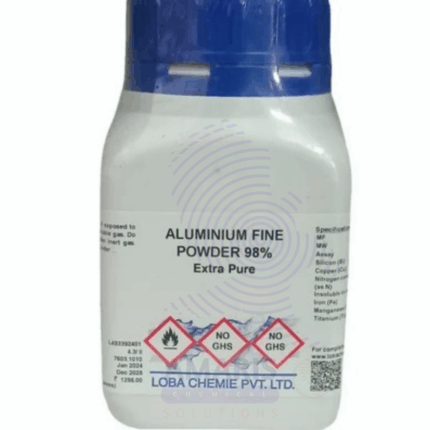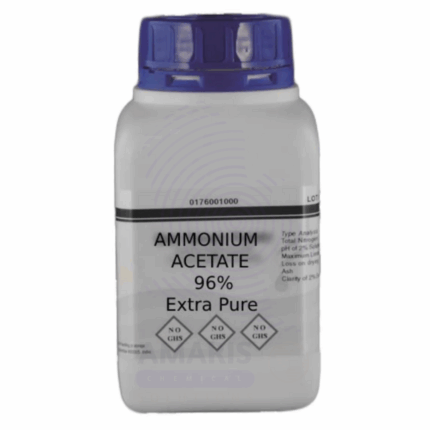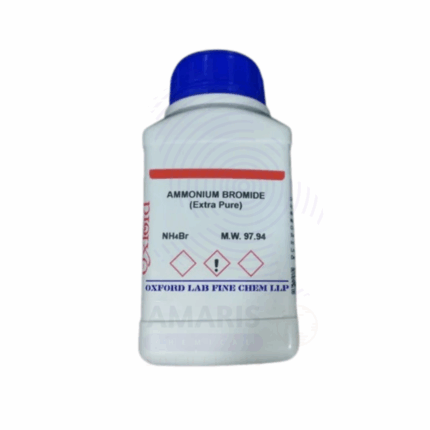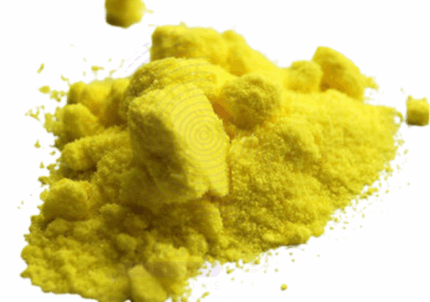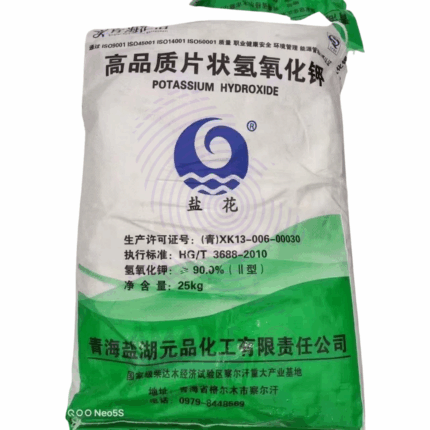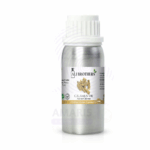
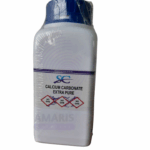
Calcium Carbide Extra Pure
$ 19.00 Original price was: $ 19.00.$ 18.76Current price is: $ 18.76.
Calcium Carbide Extra Pure is a high-purity inorganic compound primarily used in laboratories for the generation of acetylene gas through hydrolysis, making it valuable for gas evolution experiments and flame tests. It is also utilized in organic synthesis reactions where acetylene is required as a precursor. The extra pure grade ensures minimal impurities, which is essential for consistent reaction performance and accuracy in analytical or instructional settings. Due to its high reactivity with water and release of flammable gases, it must be handled with care under dry conditions and stored in tightly sealed, moisture-resistant containers away from heat sources.
Calcium Carbide Extra Pure
Primary Uses
- Acetylene Gas Generation
- Reacts with water to produce acetylene (C₂H₂) gas:
CaC2+2H2O→C2H2+Ca(OH)2\text{CaC}_2 + 2\text{H}_2\text{O} \rightarrow \text{C}_2\text{H}_2 + \text{Ca(OH)}_2CaC2+2H2O→C2H2+Ca(OH)2 - Commonly used in demonstrations, gas collection experiments, and flame testing.
- Reacts with water to produce acetylene (C₂H₂) gas:
- Qualitative Gas Tests
- Used in student and teaching labs to show combustion of unsaturated hydrocarbons, including sooty flame characteristics of acetylene.
- Source of Acetylene for Organic Synthesis
- In advanced labs, acetylene generated from calcium carbide can be used as a starting material in the synthesis of vinyl compounds, alcohols, or aldehydes.
Secondary Uses
- Demonstrations in Chemistry Education
- Ideal for visual and audible reactions, showcasing vigorous gas evolution and flammability—useful in school or college-level demonstrations.
- Study of Alkynes
- Offers an inexpensive, hands-on method to produce alkynes in situ for analytical chemistry or spectroscopic studies.
- Calibration of Gas Sensors or Detection Equipment
- Occasionally used as a controlled acetylene source to calibrate or test gas detectors in lab setups.
| PACK SIZE |
500 grams Plastic Tin |
|---|
1. Basic Identification Attributes
- Chemical Name: Calcium Carbide
- Chemical Formula: CaC₂
- CAS Number: 75-20-7
- HS Code: 2849.10.00
- Grade: Extra Pure (Laboratory Grade)
- Synonyms: Calcium acetylide
2. Physical & Chemical Properties
- Appearance: Greyish-white to brown solid or crystalline lumps (may darken due to impurities)
- Odor: Garlic-like (from impurities, mainly phosphine and arsine)
- Molar Mass: 64.10 g/mol
- Melting Point: ~2,300 °C
- Solubility:
- Reacts violently with water to produce acetylene gas (C₂H₂)
- Insoluble in most organic solvents
- Density: ~2.22 g/cm³
- Reactivity: Highly reactive with water and moisture
3. Safety & Hazard Attributes
- GHS Classification:
- Water-reactive substances (Category 1)
- Flammable gases (Category 1 – via acetylene generation)
- Acute toxicity (Category 4)
- Hazard Statements:
- H260: In contact with water releases flammable gases
- H302: Harmful if swallowed
- H314: Causes severe skin burns and eye damage
- NFPA Ratings:
- Health: 3
- Flammability: 3
- Reactivity: 3
4. Storage & Handling Attributes
- Storage Conditions:
- Store in tightly sealed containers in a dry, cool place
- Keep away from moisture, acids, and oxidizers
- Packaging: Typically sealed metal or moisture-resistant containers
- Handling Precautions:
- Use only in a dry atmosphere or glovebox
- Wear gloves, goggles, lab coat, and work in well-ventilated or fume hood conditions
- Incompatibilities: Water, acids, humid air, oxidizing agents
5. Regulatory & Compliance Attributes
- Transport Classification (UN):
- UN 1402 – Calcium Carbide
- Class 4.3 (Substances which emit flammable gases when in contact with water)
- Disposal:
- Quench small amounts in controlled, ventilated conditions
- Never dispose with water down the drain — generates acetylene
- Use hazardous chemical disposal protocols
6. Environmental & Health Impact
- Toxicity:
- Harmful via inhalation or ingestion
- Contact with water generates acetylene, a highly flammable and explosive gas
- Corrosive to eyes, skin, and mucous membranes
- Ecotoxicity:
- Harmful to aquatic organisms if not neutralized before disposal
- Biodegradability: Not applicable — inorganic solid
SAFETY PRECAUTIONS
- Personal Protective Equipment (PPE):
- Use chemical-resistant gloves, goggles, face shield, and lab coat.
- A fume hood is recommended for handling due to gas evolution risks.
- Handling:
- Handle with extreme care — reacts violently with water to release flammable acetylene gas.
- Keep dry at all times. Avoid breathing dust or vapors.
- Storage:
- Store in a tightly sealed container in a cool, dry, well-ventilated area.
- Keep away from moisture, water, acids, and incompatible chemicals.
- Keep away from any source of ignition.
- Incompatibilities:
- Water, moisture, acids, oxidizing agents.
FIRST AID MEASURES
- Inhalation:
- Move to fresh air immediately.
- Seek medical attention if coughing, shortness of breath, or irritation occurs.
- Skin Contact:
- Brush off any dry material gently.
- Rinse thoroughly with plenty of water.
- Remove contaminated clothing and seek medical help.
- Eye Contact:
- Rinse immediately and thoroughly with water for at least 15 minutes.
- Seek urgent medical attention.
- Ingestion:
- Do NOT induce vomiting.
- Rinse mouth and seek immediate medical help.
- May release gas in the stomach, causing pressure or explosion risk.
FIRE FIGHTING MEASURES
- Flammability:
- Not directly flammable, but reacts with water to produce highly flammable acetylene gas.
- Extinguishing Media:
- Dry sand, dry powder, or Class D fire extinguishers for metal fires.
- DO NOT use water or foam.
- Hazardous Combustion Products:
- Acetylene gas (C₂H₂), carbon monoxide (CO), and carbon dioxide (CO₂).
- Firefighting Instructions:
- Use self-contained breathing apparatus (SCBA) and full protective gear.
- Cool surroundings with dry extinguishing media if safe to do so.


 Preservatives(food)
Preservatives(food) Flavor Enhancers
Flavor Enhancers Acidulants
Acidulants Sweeteners
Sweeteners Antioxidants
Antioxidants Colorants(food)
Colorants(food) Nutraceutical Ingredients (food)
Nutraceutical Ingredients (food) Nutrient Supplements
Nutrient Supplements Emulsifiers
Emulsifiers
 Collectors
Collectors Dust Suppressants
Dust Suppressants Explosives and Blasting Agents
Explosives and Blasting Agents Flocculants and Coagulants
Flocculants and Coagulants Frothers
Frothers Leaching Agents
Leaching Agents pH Modifiers
pH Modifiers Precious Metal Extraction Agents
Precious Metal Extraction Agents
 Antioxidants(plastic)
Antioxidants(plastic) Colorants (Pigments, Dyes)
Colorants (Pigments, Dyes) Fillers and Reinforcements
Fillers and Reinforcements Flame Retardants
Flame Retardants Monomers
Monomers Plasticizers
Plasticizers Polymerization Initiators
Polymerization Initiators Stabilizers (UV, Heat)
Stabilizers (UV, Heat)
 Antifoaming Agents
Antifoaming Agents Chelating Agents
Chelating Agents Coagulants and Flocculants
Coagulants and Flocculants Corrosion Inhibitors
Corrosion Inhibitors Disinfectants and Biocides
Disinfectants and Biocides Oxidizing Agents
Oxidizing Agents pH Adjusters
pH Adjusters Scale Inhibitors( water)
Scale Inhibitors( water)
 Antioxidants(cosmetic)
Antioxidants(cosmetic) Emollients
Emollients Fragrances and Essential Oils
Fragrances and Essential Oils Humectants
Humectants Preservatives
Preservatives Surfactants(cosmetic)
Surfactants(cosmetic) Thickeners
Thickeners UV Filters
UV Filters
 Fertilizers
Fertilizers Soil Conditioners
Soil Conditioners Plant Growth Regulators
Plant Growth Regulators Animal Feed Additives
Animal Feed Additives Biostimulants
Biostimulants Pesticides (Herbicides, Insecticides, Fungicides)
Pesticides (Herbicides, Insecticides, Fungicides)
 Active Pharmaceutical Ingredients (APIs)
Active Pharmaceutical Ingredients (APIs) Excipients
Excipients Solvents(pharmaceutical)
Solvents(pharmaceutical) Antibiotics
Antibiotics Antiseptics and Disinfectants
Antiseptics and Disinfectants Vaccine Adjuvants
Vaccine Adjuvants Nutraceutical Ingredients (pharmaceutical)
Nutraceutical Ingredients (pharmaceutical) Analgesics & Antipyretics
Analgesics & Antipyretics
 Analytical Reagents
Analytical Reagents Solvents(lab)
Solvents(lab) Chromatography Chemicals
Chromatography Chemicals Spectroscopy Reagents
Spectroscopy Reagents microbiology-and-cell-culture-reagents
microbiology-and-cell-culture-reagents Molecular Biology Reagents
Molecular Biology Reagents Biochemical Reagents
Biochemical Reagents Inorganic and Organic Standards
Inorganic and Organic Standards Laboratory Safety Chemicals
Laboratory Safety Chemicals Specialty Laboratory Chemicals(Special Laboratory Equipment)
Specialty Laboratory Chemicals(Special Laboratory Equipment)
 Demulsifiers
Demulsifiers Hydraulic Fracturing Fluids
Hydraulic Fracturing Fluids Scale Inhibitors(oil)
Scale Inhibitors(oil) Surfactants(oil)
Surfactants(oil) Drilling Fluids
Drilling Fluids
 Dyes and Pigments
Dyes and Pigments Bleaching Agents
Bleaching Agents Softening Agents
Softening Agents Finishing Agents
Finishing Agents Antistatic Agents
Antistatic Agents
 Admixtures
Admixtures Waterproofing Agents
Waterproofing Agents Sealants and Adhesives
Sealants and Adhesives Curing Compounds
Curing Compounds Concrete Repair Chemicals
Concrete Repair Chemicals Anti-Corrosion Coatings
Anti-Corrosion Coatings
 Surfactants(cleaning)
Surfactants(cleaning) Builders
Builders Enzymes
Enzymes Solvents (Cleaning)
Solvents (Cleaning) Fragrances
Fragrances
 Electronic Chemicals
Electronic Chemicals Catalysts
Catalysts Lubricants
Lubricants Photographic Chemicals
Photographic Chemicals Refrigerants
Refrigerants Automotive chemicals
Automotive chemicals Pyrotechnic Chemicals
Pyrotechnic Chemicals
 Biodegradable Surfactants
Biodegradable Surfactants Bio-based Solvents
Bio-based Solvents Renewable Polymers
Renewable Polymers Carbon Capture Chemicals
Carbon Capture Chemicals Wastewater Treatment Chemicals
Wastewater Treatment Chemicals
 Pigments
Pigments Solvents(paint)
Solvents(paint) Specialty Coatings
Specialty Coatings Binders/Resins
Binders/Resins Additives
Additives Driers
Driers Anti-Corrosion Agents
Anti-Corrosion Agents Functional Coatings
Functional Coatings Application-Specific Coatings
Application-Specific Coatings
 Fresh Herbs
Fresh Herbs Ground Spices
Ground Spices Whole Spices
Whole Spices Spice Blends
Spice Blends Dried Herbs
Dried Herbs
 Leavening Agents
Leavening Agents Dough Conditioners
Dough Conditioners Flour Treatments
Flour Treatments Fat Replacers
Fat Replacers Decoratives
Decoratives Preservatives(baking)
Preservatives(baking)
 Plasticizers & Softeners
Plasticizers & Softeners Reinforcing Agents
Reinforcing Agents Adhesion Promoters
Adhesion Promoters Vulcanizing Agents
Vulcanizing Agents Antidegradants
Antidegradants Blowing Agents
Blowing Agents Fillers & Extenders
Fillers & Extenders Accelerators & Retarders
Accelerators & Retarders

